It starts near Paris and finishes in Nice. Like a sandwich, it’s what is in between that counts so here’s a closer look at the Paris-Nice route for 2022, set for 6-13 March.
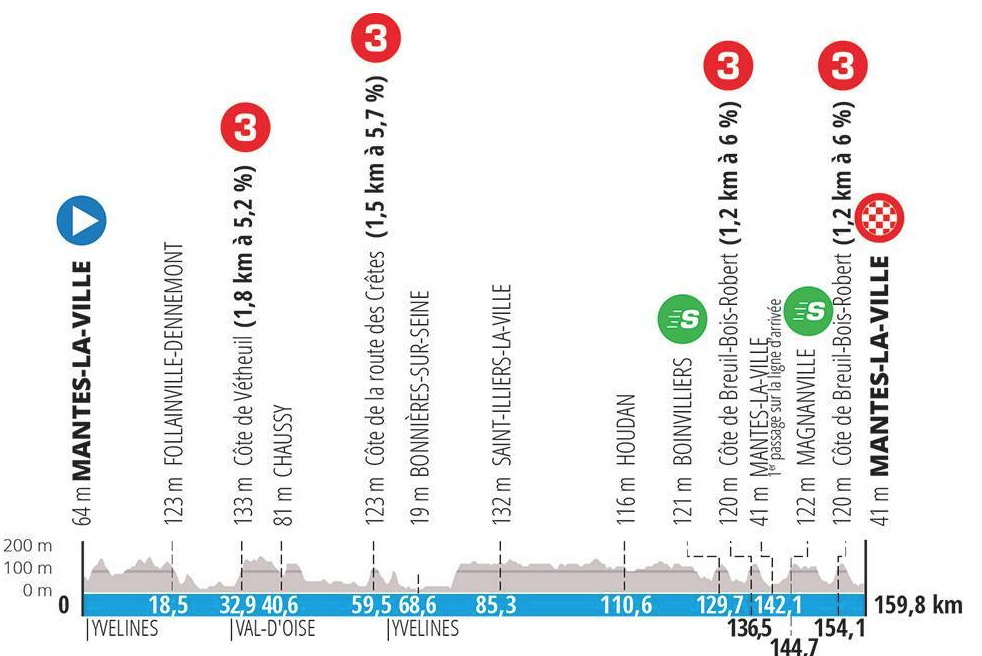
Stage 1 and the usual loop in the Yveslines department the west of Paris. There’s the short climb to Breuil for the puncheurs and crucially once out of the village at the top the roads are very exposed with open farmland all around so if the wind blows this could be lively.
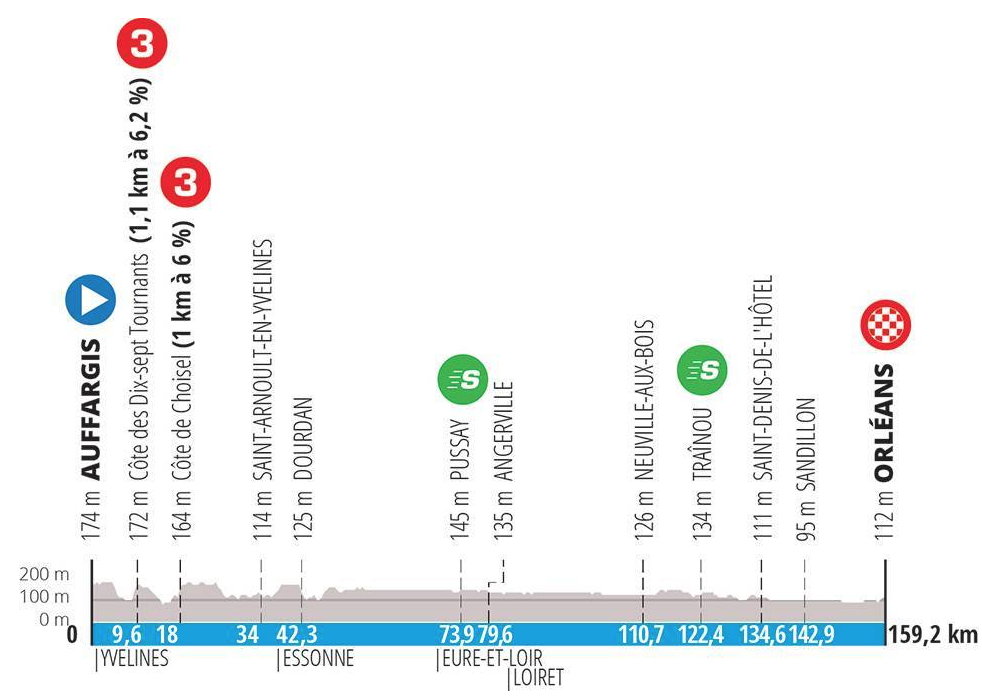
Stage 2 is another day to watch for crosswinds. If the wind blows it’ll be a vintage day, if not it’s a surefire sprint in old Orléans.

Stage 3 goes to Dun-le-Palestel, population just 1,100 and in one of France’s emptiest, and emptying areas. But there’s a cycling link as Dun is the home of a post-Tour criterium held on the first Saturday of August. The finale features some climbing, nothing at all mountainous but just enough to spoil things for the heaviest of sprinters, especially if teams work to make things harder.
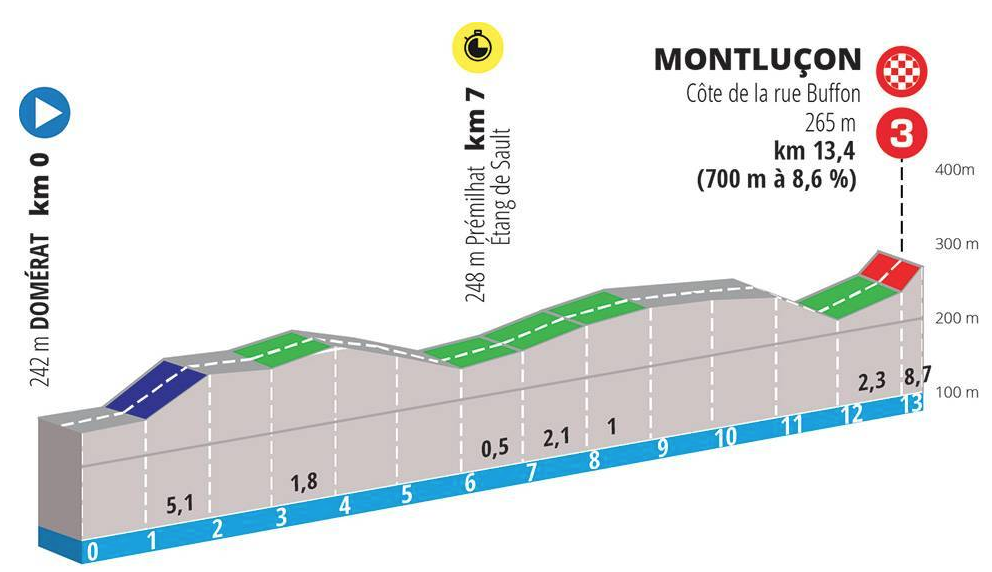
Stage 4 is the now traditional mid-week time trial stage and at 13.4km, short. It looks like it’s in the middle of nowhere but it’s got a celebrity touch. Domérat was where Audrey Tatou grew up and Montluçon is where Julian Alaphilippe did the same. Tatou’s unlikely to show up but will the world champion start the race? There’s a mix of narrow roads before a steep finish on the edge of town, described as 700m at 8% but steeper at the top, the kind where a GC rider… or Alaphilippe can take back time on the specialist rouleurs.
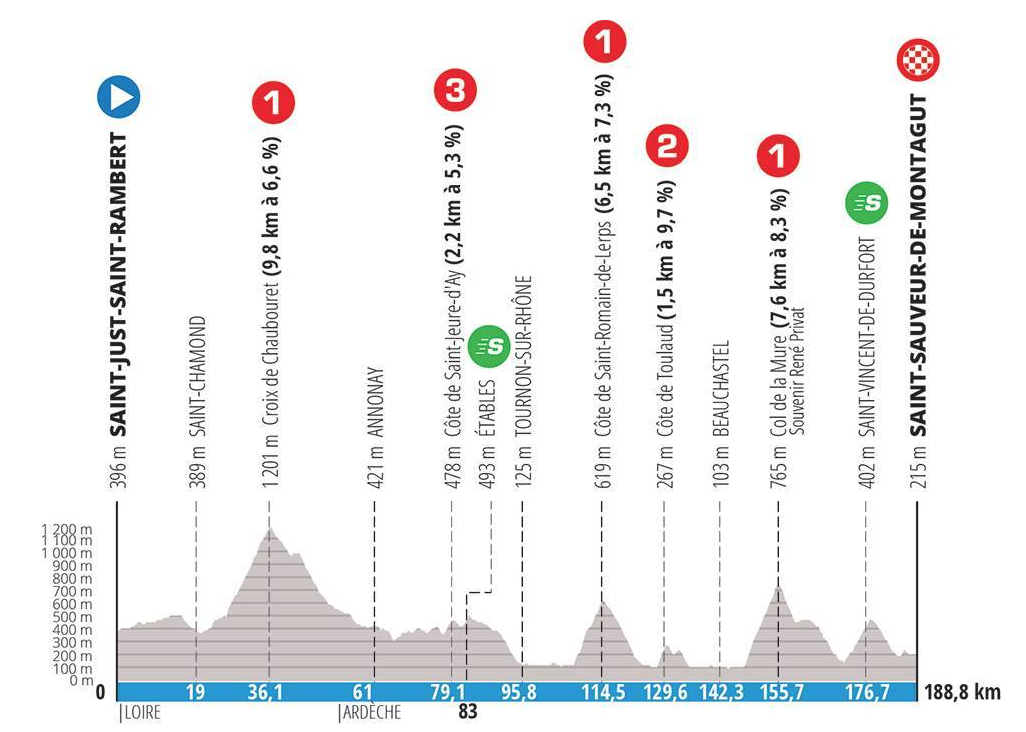
Stage 5 leaves Saint-Just-Saint-Rambert to climb 3,400m. After the Croix de Chaubouret on the flanks of Mont Pilat it’s along the Rhone valley before they turn into the Ardèche hills. The Col de la Mûre is a selective climb, 7km at over 8% and then there’s a tricky finish via the very narrow climb of Salée to the intermediate sprint before a descent on bigger roads to the finish.

Stage 6 and by now there should be some time gaps, maybe some riders even eased up the day before, so this could be one for the breakaway. The Col de Murs is harder than the 4% sounds and ideal for the move to go away. The final climb of the Col d’Espigoulier has its steep parts before a fast descent and then a bonus bump in the road to Lascours before the finish in Aubagne.

Stage 7 is the summit finish day with the Col de Turini. It’s almost a copycat stage of 2019 when Dani Martinez won the day, but it’s an abbreviated course. The Turini, climbed from the west/north here, is a long slog with steady gradients, sitting on a good wheel counts for plenty and the selection happens slowly rather than suddenly.

Having written Paris-Nice starts in Paris and finishes in Nice, well it hasn’t reached Nice for the last two years because of Covid. Hopefully it’s third time lucky and Stage 8 goes as planned. It’s the usual fast and furious race in the hills behind Nice with a couple of small twists. First the “Côte de Berre-les-Alpes”, better known to locals as the Colla Donna leading to the Col de Nice. Then they drop into Nice and climb the Col d’Eze but this time via new road which promises a kilometre at 13.5%. The details aren’t published but it looks like the Col de Villefranche via the Boulevard Des Deux Corniches and then the Chemin du Vinaigrier… but we’ll have to see when the full route is published. Once at the pass there’s a descent straight to the finish on the Promenade des Anglais seafront.
The Verdict
A classic route in the modern sense, the course exploits as much of the geography possible via the Loire and Rhone valleys and returns to plenty of familiar places along the way and with a couple of extra difficulties along the way. The opening stages suit the sprinters and become fascinating if the wind blows. The mid-week time trial is just enough to prise apart the GC and then makes space for the Nice weekend of two road race stages with a summit finish on the Saturday and the corniche cliffhanger on the Sunday with the added difficulty of the new approach to the Col d’Eze.
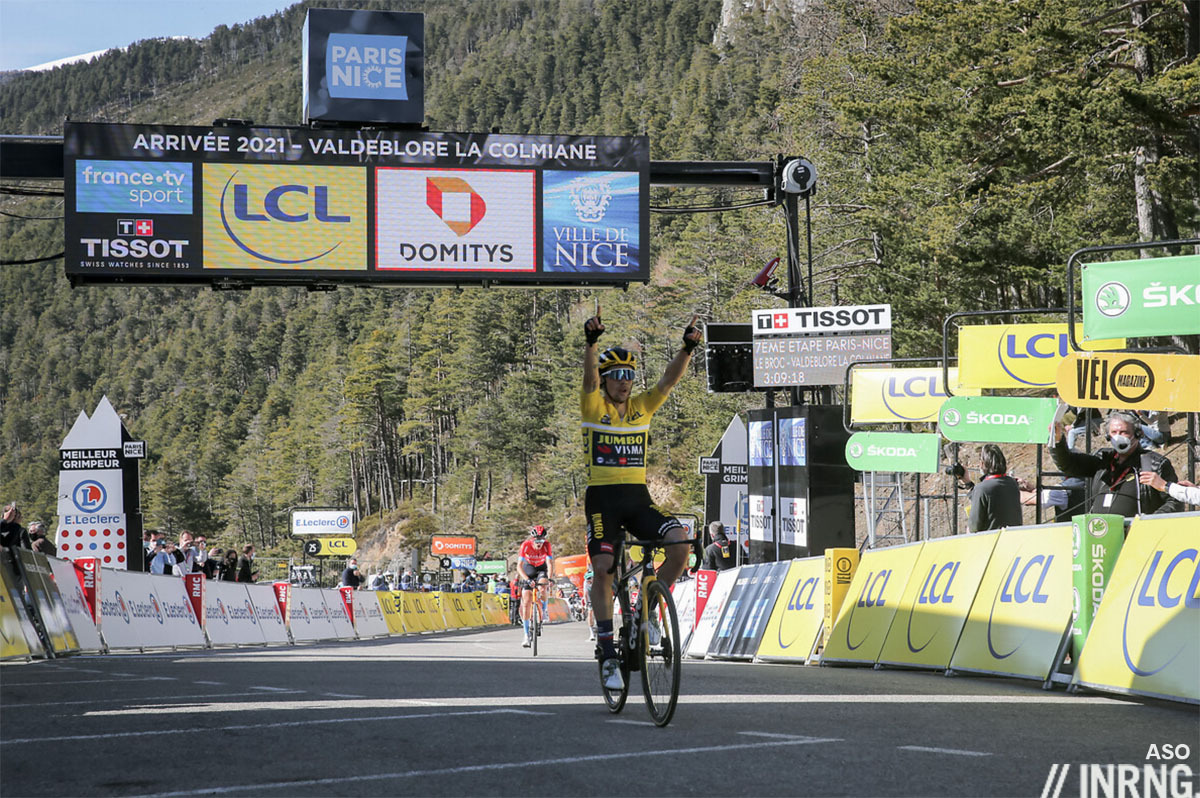
The Contenders
It’s too soon to know the whole startlist – some teams have yet to present their jersey and plans – but this morning’s presentation announced Primož Roglič will be back to avenge his loss from last year and he’s going to be very hard to beat, the course suits. According to race director François Lemarchand in L’Equipe, he’ll clash with Egan Bernal and Ineos also come with Filippo Ganna who’ll aim for the TT stage but can be a weapon on many stages. Max Schachmann will be back to try and win for the third year in a row.


Roglic vs Bernal round 1 is promising. But how does the Colombian come out on top, can’t see it? Sounds like no Alaphilippe, he will do Tirreno Adriatico.
This race has almost been a barometer of the season to come, certainly in terms of past Sky / Ineos dominance of many of the major stage races.
Now it’s the domain of Primoz Roglic and his Jumbo team. It’s difficult to see that situation altering as well, although I wonder if many of the peloton’s big hitters will be over in Italy again?
Are RCS paying appearance money or what?
I think the riders prefer tirreno because generally the weather is better and its considered a better warm up for sanremo (not sure what the rescheduling will do to this)
“This race has almost been a barometer of the season to come…” makes me wonder how this came to be? As in that opinion, especially when it comes to GT’s and especially Le Beeg Shew in July.
Go back a decade and note the P-N winners – future “GT champs” like Tony Martin, Richie Porte, Carlos Betancur, Sergio Henao and Max Schachmann. Go back another decade and add Alex Vinokourov, Jorg Jaksche, Bobby Julich and Davide Rebellin. So it’s a barometer of what exactly?
6 of the past 10 Paris-Nice races have been won by Sky / Ineos riders, in each case that team then going on to win the Tour.
The past 2 editions have been dominated by Roglic and Jumbo, only for him to fall, and the Dutch team have taken the mantle as the strongest individual team at both TdFs also.
I’d say that’s quite a barometer of the way the wind is blowing, no?
Sky deliberately used Paris-Nice as a practice run for the Tour, to get a rider in the yellow jersey and have them go through all the daily routines such as the podium, press conference etc and to have the other riders working to defend the lead so they could all have experience of this for July. Paris-Nice has often been a stage race where younger riders come to the fore as well.
“I’d say that’s quite a barometer of the way the wind is blowing, no?”
I’d say not really, but your opinion is as good as mine.
OTOH, maybe after Paris-Nice 2022 you can read that barometer and predict what’s gonna happen in July at LeTour 2022 instead of reverse-engineering it?
Ecky Thump, you’re wasting your time trying to use evidence, facts and reason against condescending, self-satisfied bigotry. Good luck all the same.
Tricky for Bernal if Roglič is there as the Slovenian wins in the TT and is better at getting time bonuses. A close second place could be a result in itself as Bernal might hope to fare better on big mountains and over three weeks. Also Ineos can bring another leader and might hope for the crosswinds as Bernal did so well in 2019 on the opening two stages.
I think a certain Wout will be featuring highly.
Who Jumbo give leadership to we’ll have to wait (unless it’s decided in the TT/crosswinds).
Tirreno seems far too hard these days, it broke the two best classics riders. Maybe one for the top climbers than rouleurs.
Van Aert will want the race for training but can’t help remember he’s got an eye on the points jersey in the Tour de France and so we’ll see how he goes in the roads to Nice, you’d think he’s able to score on many of the stages here, TT included.
As I read the topographical maps of Nice, »Colla Donna« is an actual col and rests lower than the »Côte de Berre-les-Alpes« which isn’t a col (the former is on the descent from the latter).
I hope the race does make it to Nice this year, as I feel like it loses its identity without that. I’d sort of forgotten that Schachmann had even won, despite last year’s being a good race.
I find it’s the choice of bread that is most important for a sandwich
I just had a look at the Wikipedia page for the Creuse department and it does seem to be emptying out at quite a pace. Is this the effect of the industrialisation of agriculture?
You have a whole diagonal swathe of France that’s been emptying out for decades, some parts faster than others. Agriculture as you say must be part of it, but take the next day’s stage in Montluçon, a small town once and then a canal was built and it became an industrial town (“the Manchester of France” say some) only for the iron and steel industries to vanish; Dunlop still has a tire factory there but many of the buildings seem to be crumbling so some cities have declined too. It’s striking when you ride though the villages during the day and house after house has shutters closed.
Time for some levelling up à la française..